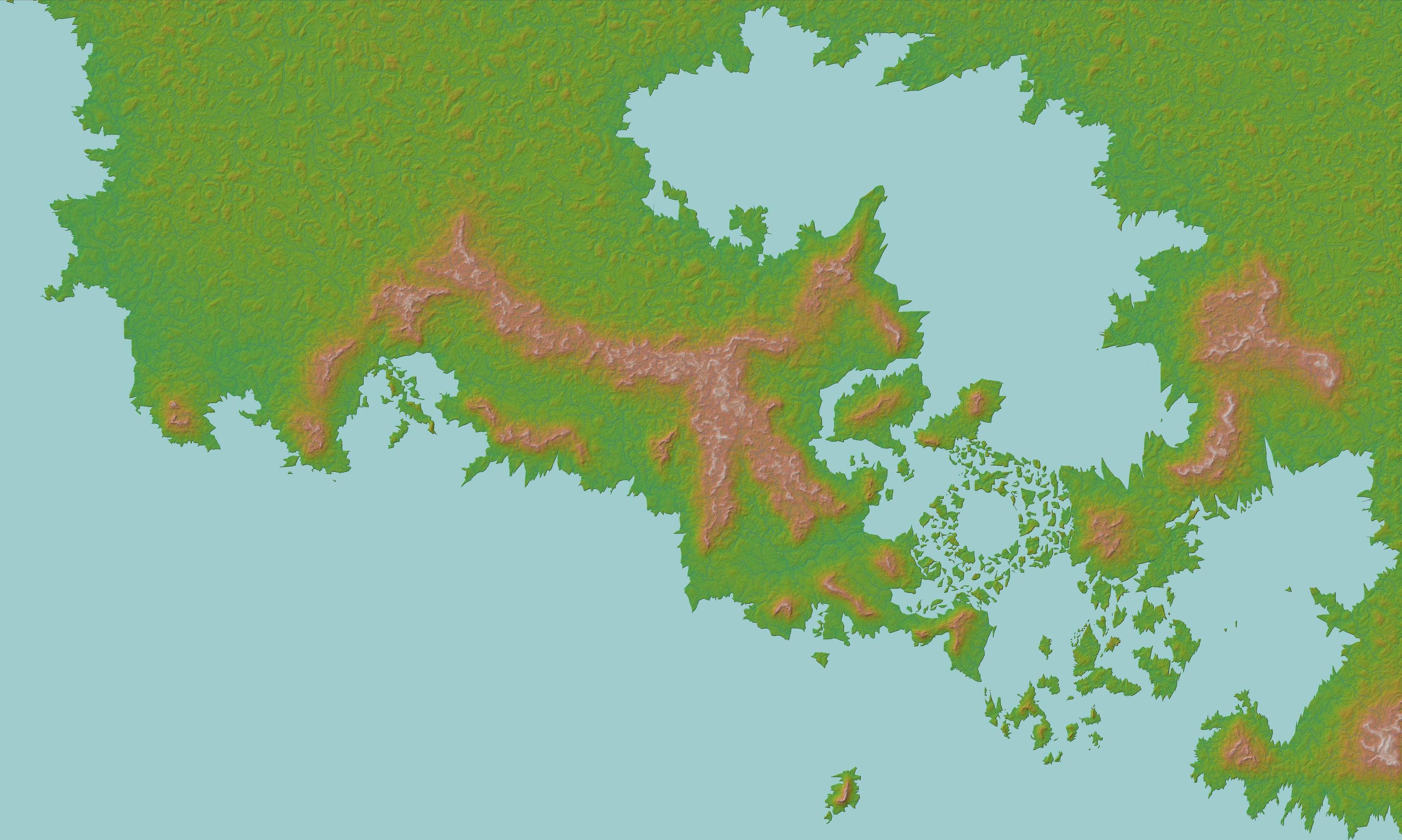I created the above map using Photoshop and used Wilbur to erode the terrain a bit and calculate possible river flows. Still needs work but I need to create a river mask before I can go on. My method at the moment is to trim down the generated river flows to just the ones I want to keep, but I'm having trouble deciding how many rivers I should place and where they should be.
The scale of the map is roughly 1px=1km. It seems to me then that only rivers with an average width of >1km should be depicted. However, I'm mostly using the map as a reference for worldbuilding and writing purposes, so I'd be losing a lot of meaningful detail by not including smaller but still significant rivers. It's also difficult for me to realistically determine how wide/big each river would be, and factors like tributaries and how far they appear into the mountain ranges just makes it even more complicated. I'd imagine things like amount of precipitation at each catchment area would also need to be considered.
The map isn't based on an Earth-like world so a lot of geological factors like tectonics and latitude don't translate directly. Without getting too far into the weeds, I'd just like to find a decent methodology to get a reasonable river mask finished. Any suggestions would be appreciated.



